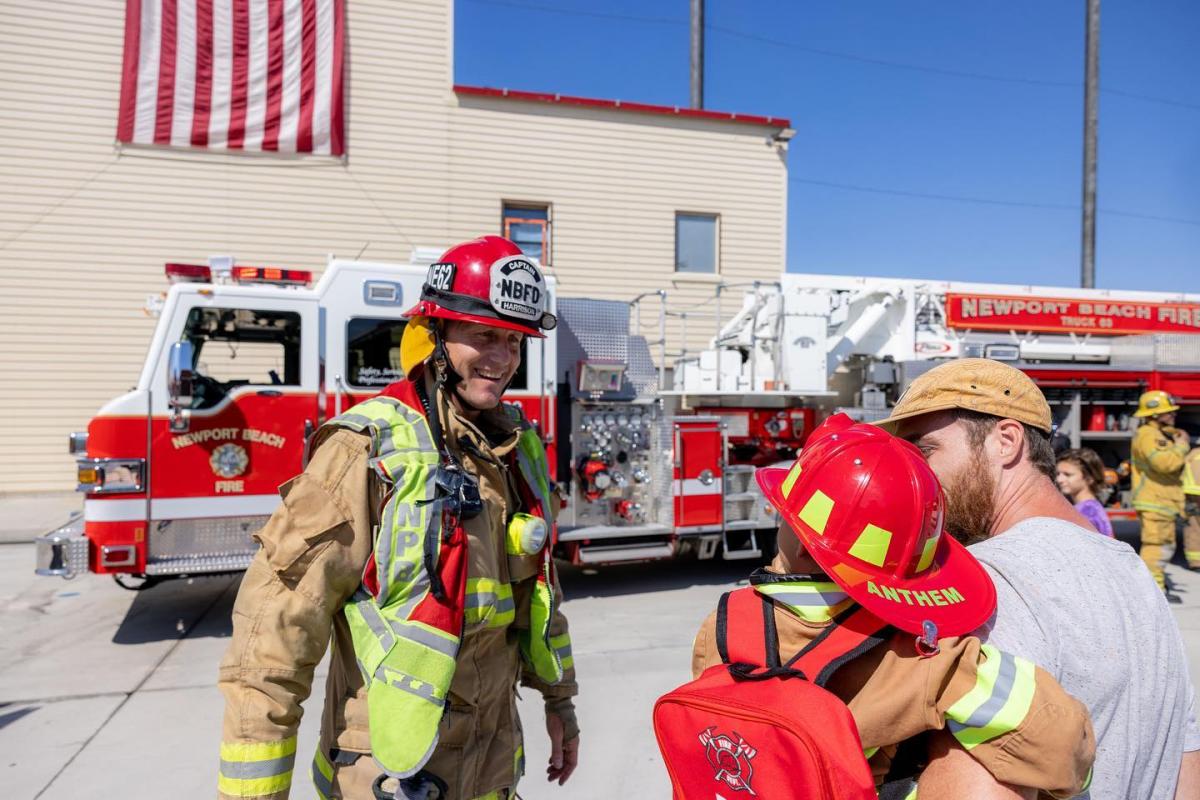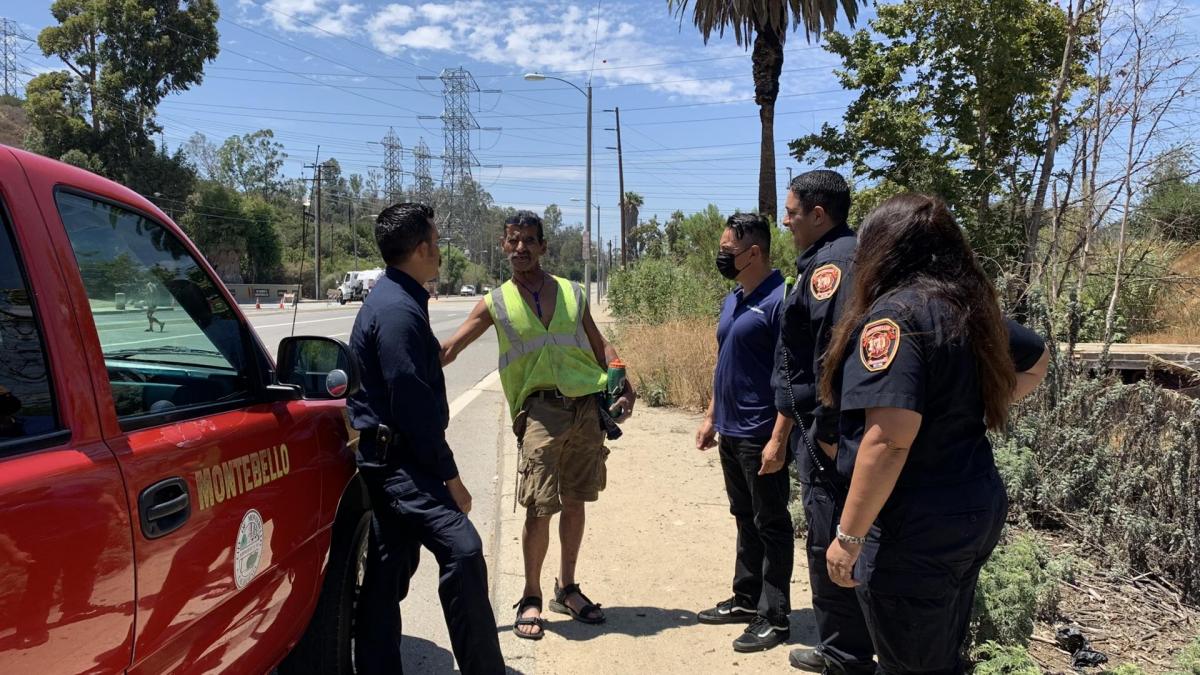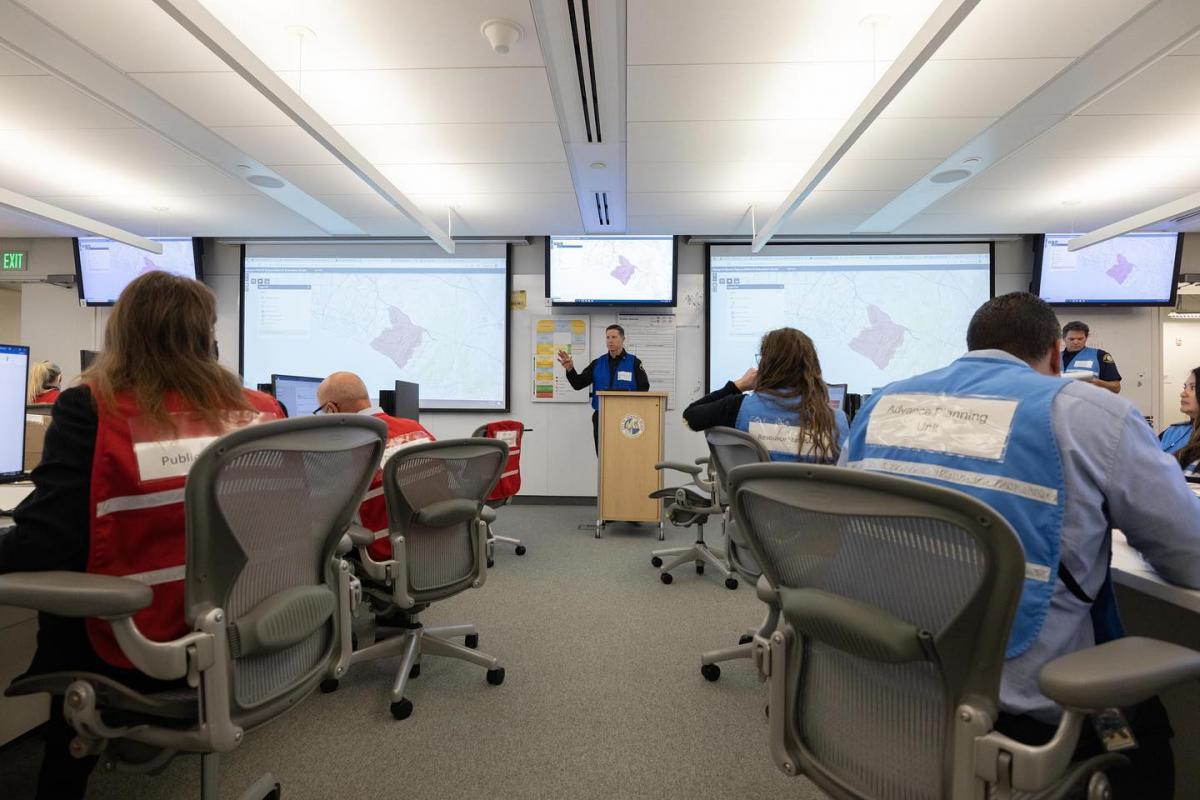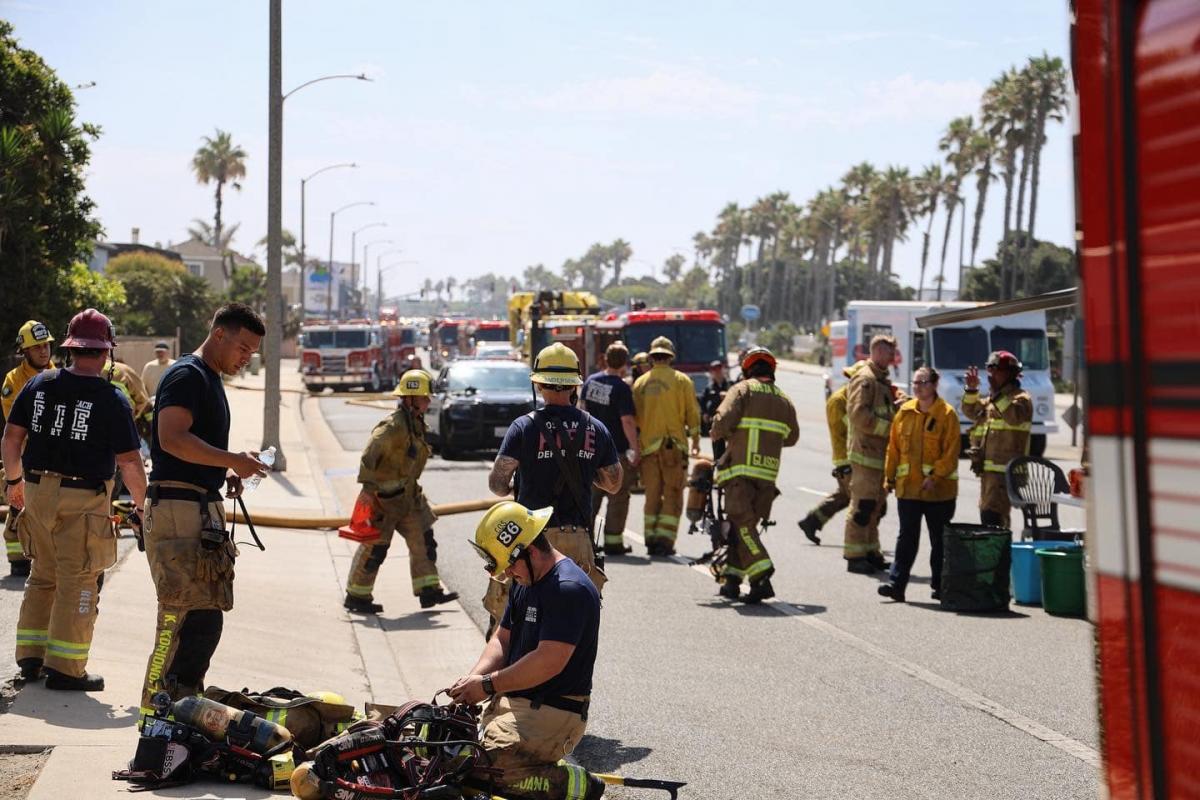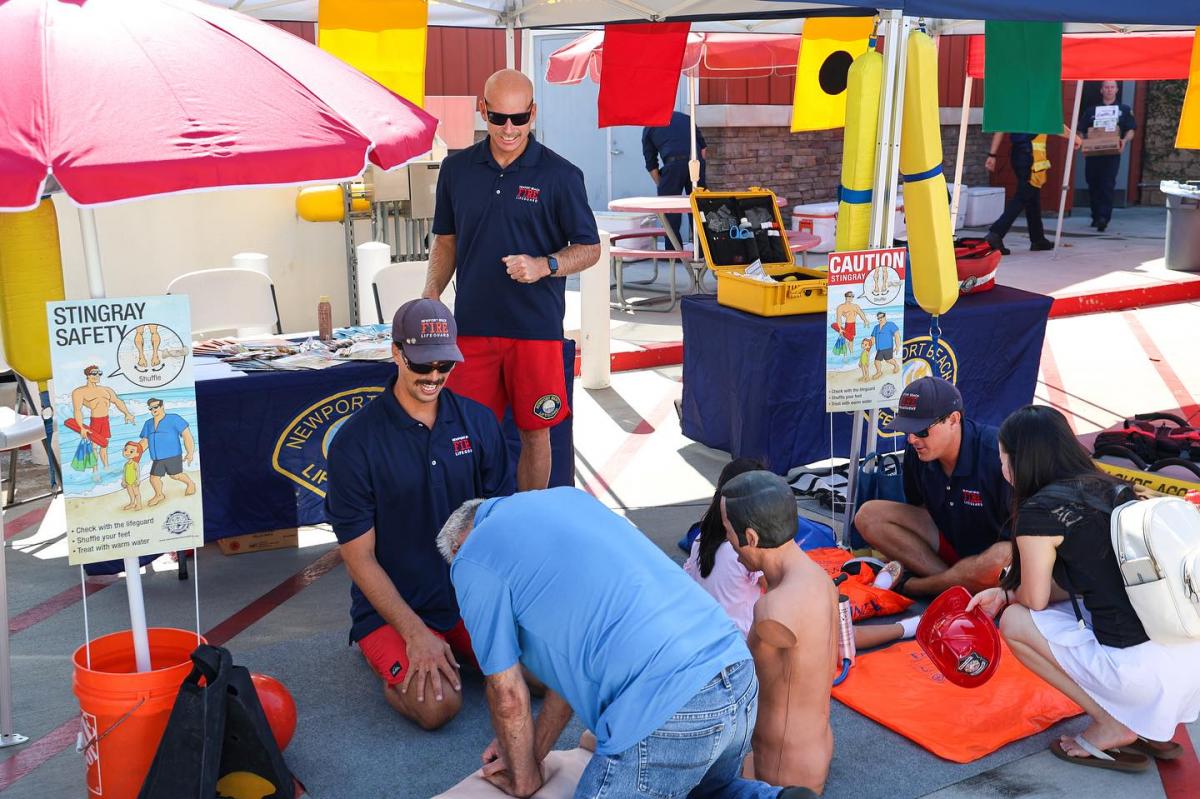Firefighters can do much more than just put out fires
Jeff Boyles is the fire chief of the Newport Beach Fire Department. He can be reached at jboyles@nbfd.net.
Many local governments devote much of their budgets to a standing army of firefighters and medical personnel. In fact, the combined cost of funding public safety agencies can occupy more than half of a local municipality’s budget. Yet in many communities throughout the state, people underutilize their fire department’s emergency response system — if they use it at all.
That does not mean cities should divert funding away from fire departments. Rather, they can use the fire service’s unique skillsets and ample funding to address other critical issues, big and small.
“The fire department’s role in the local government fabric has evolved and expanded to the number one emergency service delivery organization due to their multi-capabilities they provide to communities,” said Mike McCliman, Rancho Cucamonga Fire Protection District fire chief. “The primary role of the fire service since its inception has increased immensely to meet the growing needs of our communities.”
The challenge and reality of public safety
When Benjamin Franklin formed the first volunteer fire brigade in 1736, he likely did not forecast that the cost of fire protection and emergency services would rise to the levels it has today. With the need for all types of public services getting higher, local leaders must make tough decisions when it comes to allocating resources toward public services.
Looking at the trends, the need for public programs and services will only increase given our aging infrastructure and population, as well as increased demands brought about by sustained increases in homelessness, gun violence, drug use and deaths, natural disasters, and other realities of the time we are living.
Fortunately, there is the fire service. Firefighters prepare — through training and pre-planning — and respond to a range of emergencies. As local governments struggle to meet greater social needs, the fire service can lean into some of its strengths and fill some of those gaps.
Below are some potential areas where fire departments can provide value-added services for their communities. Not every recommendation will fit every community or resolve every public safety issue. Still, every agency can benefit from thinking about how to create additional value through a well-funded, well-trusted, and fully staffed fire department.
Homelessness
Cities everywhere are struggling to find solutions to the homelessness crisis. Some have successfully incorporated multiple professional disciplines into a mobile integrated health system. These teams often include paramedics, police officers, mental health professionals, and other social service workers who connect people with supportive services.
As trusted public officials, the fire service can play an integral role within these systems too. In general, people — especially those experiencing a mental health crisis — view firefighters as less threatening than their law enforcement counterparts, allowing for an increased likelihood of positive intervention.
However, under the dominant model, firefighters work with people experiencing homelessness in an emergency response capacity. Their only option is to transport the person to an emergency room. The emergency medical services (EMS) system in California is working through legislation that would provide public safety personnel with other options to assist people who need something other than a trip to the emergency room.
Agencies don’t need to wait for legislation. The fire service can be part of the solution if we are willing to position ourselves accordingly. For example, the city of Sacramento recently put its fire department in charge of its emergency response to homelessness. The fire department now coordinates the activities of multiple city departments, county behavioral health workers, park rangers, and outside service partners.
Incident management
The same coordination and communication skills firefighters depend on when responding to natural disasters can serve those same communities well when it comes to incident management and mitigation in general. A case in point is the recent COVID-19 pandemic. Most cities and counties opened emergency operations centers to manage the pandemic and secure federal funding. When the vaccines were sent to Orange County for distribution, the county’s first call was to the local fire agencies to ensure timely and well-managed points of distribution.
The Orange County fire agencies created, managed, and staffed multiple countywide vaccine sites for a large percentage of the county’s 3.2 million residents. The fire service also provided local testing facilities — saving tens of thousands of dollars — and a service much more efficiently and timely than if the county had to figure things out on its own.
Safety and security
Both domestic terrorism and violence appear to be increasing. Governments at all levels are working to identify, curtail, and respond to this rising threat. A couple of examples, among many, are active shooter events and human sex trafficking. Again, fire agencies are well-positioned to respond to these crises.
The Columbine shooting forever changed how the fire service prepares, trains, and enters a dynamic situation with injured victims. Later shootings raised awareness about the immediate need for rapid victim treatment. As seen in Uvalde, Texas, the rapid actions of paramedics and law enforcement officers in an active shooter situation — or lack thereof — can play a tremendous role in the survivability of injured patients.
The public is no longer sympathetic to law enforcement and EMS personnel waiting to enter an active shooter hot zone. People who are seriously injured have a much greater statistical chance of surviving if they reach an operating table within one hour of impact. Paramedics can rapidly extract patients from an incident and transport them to a hospital — even during an active incident.
In instances of human trafficking, paramedics are some of the only people that survivors trust. Survivors are trained and intimidated not to trust law enforcement, social workers, or clergy for fear of retribution from their trafficker. However, if a survivor is injured or ill, their trafficker is often willing to let them be treated by EMS professionals. If trained, EMS personnel can help identify trafficked persons and work discreetly with the appropriate law enforcement entity.
Community risk reduction
Most insurance companies have found that putting systems in place that reduce future problems leads to a decrease in claims. You might get a deduction on health insurance for annual physician visits or a deduction on auto insurance for not having any moving violations. The same concept translates into community risk reduction.
Many of us know that fire prevention bureaus can aid homeowners with vegetation setbacks and basic wildfire mitigation measures. However, EMS personnel can also work with local care facilities to incorporate fall hazard mitigation — one of the most common calls for emergency medical services in many urban and metropolitan fire agencies.
“Fire personnel are positioned, trained, and equipped with the resources to connect with the public and constituents in a variety of ways when they are not on active calls,” said Nat Rojanasathira, who serves as an assistant city manager for Monterey.
Don’t wait for an incident to happen. Instead, you should ask yourself if your department is out assisting the community in innovative and realistic ways that prevent tragedies before they happen.
Community preparedness
Fire departments can also play a bigger role in community preparedness and education. Over the past couple of decades, more cities have utilized community emergency response teams. Fire departments usually lead these teams and have taught communities how to prepare for and respond appropriately in the event of a disaster.
Even seemingly basic things, like public defibrillators and CPR/compression training, can play a critical role in protecting your community. Newport Beach modified an ocean emergency program from nearby Huntington Beach for local high school students. Known as SALT, the program teaches surfers how to recognize and rescue drowning persons — a decision that has already saved lives.
Newport Beach also placed Narcan in public schools and educated staff on how and when to use it to help save people from opioid overdoses. A high school student was saved using Narcan weeks after a local fire agency rolled out its training to the faculty. I can’t think of a better value-added service than helping communities help themselves.
Be creative
As public safety entities, we will always have a role in emergency response. Let’s find creative ways to add value to the role we share within our communities by identifying ways to identify and mitigate problems, crises, tragedies, and disasters before they occur.
Based upon the needs of your community, search out ways to raise your agency’s profile by adding value through preparedness and self-reliant education. And remember to share your ideas with neighboring departments. After all, a rising tide lifts all boats.

